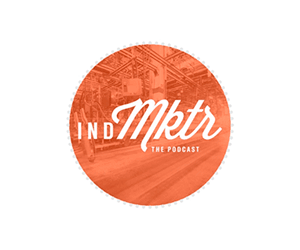In the brave new world of B2B digital marketing, the idea of focusing on inbound calls may seem antiquated. Not only do phone calls seem to make use of outdated technology (the phone sounds so twentieth century), but the idea of maintaining a call center to receive inbound calls seems like a relic of the past — or something that might be outsourced overseas and not executed very well.
In other words, inbound calls can have some negative connotations. Moreover, setting your business up to handle them requires significant investments in infrastructure and staffing.
Furthermore, lurking behind these considerations are the fundamental questions: Do inbound calls even convert? And what is the ROI?
The Truth About Inbound Calls
Let’s not beat around the bush: Inbound calls have great conversion rates. Salesforce ballparks the average rate between 30–50%, depending on how well you manage your call center and how well your inbound marketing program nurtures leads.
By way of comparison, B2B conversion rates for digital marketing channels are somewhere in the 2–10% range on average.
Why this astounding difference?
Why Inbound Calls Succeed
It takes a certain readiness to pick up the phone and call a company to ask about a product or service. Whenever you call a 1-800 number, you know you’re in for a conversation. That’s time you could spend doing something else, which means that whatever you’re inquiring about is a priority. Basically, when a customer places a call to a company, they are likely on the verge of making a purchasing decision.
How, though, do you get customers to the point where they are ready to buy — i.e., get them to a place where they are ready to pick up the phone?
Inbound calls succeed at high rates when supported by integrated marketing programs that use a combination of various marketing channels to nurture prospects and drive them toward calling when they are ready to make a serious inquiry. Together, a call center coupled with a solid digital marketing strategy can be an amazingly productive combination for today’s B2B marketing mixes.
Why? Two reasons. The first has to do with the fundamentals of the B2B buyer’s journey. The second has to do with changing technology.
The B2B buyer’s journey is anything but standardized. But according to a Forrester survey from 2015, 74% of business buyers said they conduct more than half of their research online before buying offline.
By the numbers, then, the key to a successful inbound call program is to capture customers’ attention during their online research phase.
In the B2B world, this really means having a solid content marketing practice that meets your customers’ informational needs during every important step of their buyer journey. Educate them so that when they pick up the phone, they feel like they are in the driver’s seat. And make sure your salespeople are well informed, too, so that they can meet your customers, answer their most pointed questions, and steer them toward the best choices.
Then, on the technological front, it’s obvious that we are seeing a convergence between digital and the once-analog province of the phone. The most concrete symbol of this transformation is the ubiquitous smartphone, which, in a way, allows for what we traditionally refer to as “offline” customer interactions (i.e., phone calls) to happen in online contexts.
Capitalizing on this technological transformation means ceasing to think exclusively about online vs. offline interactions. In this day and age, customers switch between online and offline channels constantly.
Maximizing the Online-Offline Conversion Conversation
A small but crucial factor in optimizing this increasingly active online-offline conversation so that it generates more inbound calls is a having a solid click-to-call practice for your calls to action (CTA). Whenever you have a CTA that is a phone number, it should be coded so that anyone viewing your online property with a smartphone will be able to click on the number and initiate a phone call.
You’re likely familiar with this dynamic already thanks to sites and apps like Yelp and TripAdvisor, as well as social networks and Google search results featuring rich snippets (if you haven’t taken advantage of this for your own business, you should; it’s a great way to display more of your company information in search results).
To institute this sort of functionality for digital properties you own and control, such as your industrial website or your email marketing program, you’ll have to audit all the places you include a phone number (or that don’t but should) and then add a phone number wrapped in a tel href tag. Here’s the format:
<a href="tel:+18665298908">1-866-529-8908</a>
Simple, right? The work is really a matter of identifying all the places that need click-to-call links and making sure that they are instituted consistently.
So where should you use click-to-call numbers? At minimum, you’ll need to add one to your website and email templates, plus any other media that you own and host, such as PDF downloads or catalogs that include your company’s contact information.
How Do You Know if It’s Working?
If you institute a click-to-call practice, you can track the success of your program in two ways: by tracking clicks and by tracking calls.
If you use Google Analytics to monitor your website’s performance, you can use event tracking to register call-link clicks on your website. Likewise, if you send marketing emails using any reputable email marketing program, it will be able to tell you how many times you call links were clicked on in any email campaign.
Of course, these methods will only track frequency; they will not tell you who called, if the calls connected, how long them were, and what was discussed.
To get to that level of detail, you will have to subscribe to a call tracking service. Standard practice is to issue tracking numbers that can be assigned to different properties (e.g., your website) or campaigns. Call tracking software will register which phone numbers were used to call into each tracked number and will record every conversations for subsequent review.
Where it gets difficult is trying to figure out how the call activity you record through your call tracking software relates to the digital marketing activities you deploy to drive the calls. Call tracking can be linked to website performance and Google AdWords campaigns using features inherent to the Google Analytics and Google AdWords interfaces, but if you want to start connecting call data to your marketing automation platform or CRM, you’ll have to subscribe to a premium service such as Dialogtech or Invoca.
In this interview with Lauren Smith of email testing service Litmus, for example, Kyle Christensen, VP of Marketing at Invoca, discusses how his company’s call tracking software can assign an individualized call tracking number to each contact that interacts with a company email. This individualizes the contacts activities and makes it possible to import data about the call into the customer’s record in the email marketing database. Not only does this aggregate customer data (e.g., associating a phone number with an email address) but it provides a fuller picture of how online and offline marketing technologies interact with one another — as well as more complete customer histories.
Time to Get Serious About Inbound Calls
With inbound calls’ off-the-charts conversion statistics and the technological convergences we’re undergoing, it’s no wonder that innovative companies are developing platforms that will integrate with the rest of the marketing technologies B2B marketers rely on every day.
And while these solutions may be overkill for business that experience low volumes of calls (but have high average sales prices), there’s no reason not to consider inbound calls as a primary marketing goal. After all, what salesperson doesn’t like getting calls from customers actively interested in their products or services?




